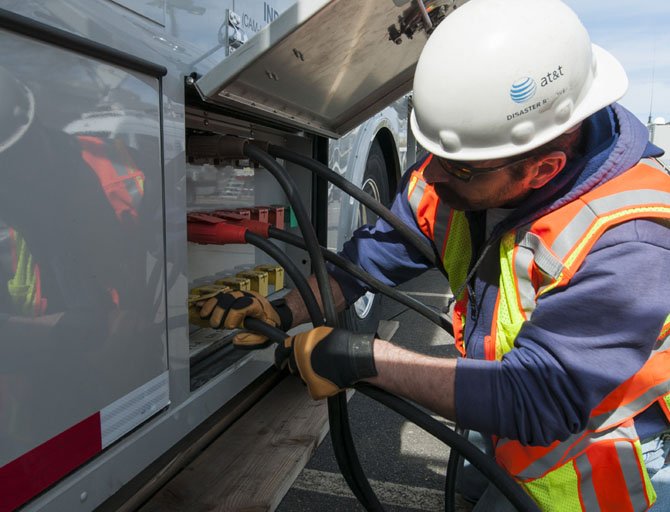Telecommunications is vital for business and government customers following a disaster, both for the impacted area and for the rest of the country.
Last week, McLean was flooded with AT&T Network Disaster Recovery (NDR) trailers, trucks and vans.
Luckily, there was no disaster.
But hurricanes, tornados and other types of disasters can occur. Telecommunications is vital for business and government customers following a disaster, both for the impacted area and for the rest of the country. The NDR team is responsible for the rapid recovery of service at AT&T network sites following catastrophic events.
To ensure the company is prepared to respond when disaster strikes, AT&T routinely conducts field tests in different cities around the country. Last week, the company set up technology trailers housing telecommunications equipment at the Hilton in Tysons Corner. Dozens of AT&T Team Members – many of them volunteers – practiced real-life scenarios so that they can immediately jump into action when disaster strikes.
The drills also give AT&T an opportunity to connect with local officials, including David Rohrer, Fairfax County’s Deputy County Executive overseeing the county’s public safety programming. Forming relationships, making connections and discussing emergency plans with local officials now makes reconnecting during a disaster much smoother and more efficient.
AT&T’s preparations enabled them to respond quickly after Hurricane Irene, the Joplin tornados and the wildfires in California. During Superstorm Sandy last year, the network suffered no loss of communications and even set up charging stations for affected residents.
AT&T has invested more than $600 million in its U.S. NDR program and another $15 million internationally. Team members have spent more than 125,000 working hours on field exercises and deployments over the last two decades.
